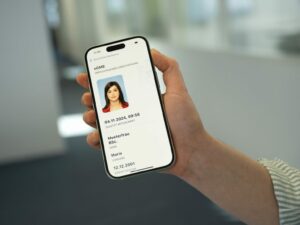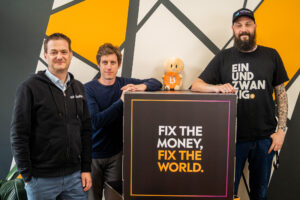Tips & Tricks on Designing Decks That Close Deals
How many times have you sent an initial presentation per mail to a potential client and never got a response? Have you experienced the hell of being interrupted in the middle of your slideshow with a question you have just the right answer to, but another 15 slides away? Yes, sales decks are a tough matter. Luckily, there are some tricks in the way you build them.
Selling a product or service can be challenging in the ever more competitive B2B field. That’s why we invited Boris Hristov, founder of the presentation agency 356labs, to give us some insights on designing outstanding decks and documents that work. Boris’ company is behind presentations that closed multimillion-dollar customer deals, secured startup investments from people like Bill Clinton and helped Gradus raise €40M in the second-biggest IPO in Bulgaria. Currently, he is working with big brands like KPMG, Publicis, Roche, Unicredit Bulbank, Microsoft, Renault and more. Here are the hacks we’ve learned from the presentation of Jedi Boris Hristov:
The initial presentation hacks
This is a deck you would usually send via mail, hoping to attract the attention and get to that desired face-to-face presentation. You need to make the people looking at it interested enough to continue clicking through. Here are Boris’ top tactics:
#Tell a story and translate it into slides
“Hi,….! This is us = 1st slide: Put your company’s name and what you are, also personalize it with the clients’ name and information.
We are professionals, a lot of people trust us = 2nd slide: There are several scenarios here. One scenario is to put together testimonials and logos of clients (and make sure they match). Always be cautious and put relevant clients there – ones that the company you are approaching knows, works with and respects. A hack: if working with PowerPoint or Google Slides predesign all logos of clients in the same size, so you can easily exchange them.
The second working version is to ask a question that requires a positive answer. The question should be addressing a need of the client you are aware of and willing to solve.
Third way: put something unexpected like 4 in 1 event to catch the attention.
Look at our projects for our clients = 3rd slide: Portfolio. Hack: make them visual and clickable elements; state underneath something like “click on the project to see more). Obviously, if you don’t have a portfolio because of the nature of your business, you may want to list something similar or go further.
And here’s who our clients trust = 4th slide: The team and expertise
Here is what we do for them = 5th slide + n more slides – for each of the services/products you are offering
Let’s talk = last slide: A clear call to action and contacts
Of course, you could use more slides for each section – this is just the basic storyline that works well for 356labs.
Bonus hack:
the smaller the file the better, you can use wecompress.com to freely compress files without losing quality
#The Deck for Face to Face Meeting
Sometimes you might not need a deck at all during the presentation and you will be asked to send it after the meeting. However, in most of the cases, when speaking to enterprise clients you better have the deck ready.
What to note: don’t mistake documents for presentations a.k.a don’t put your whole story, mission, vision, and clichés here. Work on the usability and note the people you are talking to have limited time and might interrupt you in the middle of the presentation. So, do what?
Be prepared with an interactive dashboard-like slide to open up with. It would contain four-five well-designed sections like team, services, portfolio, market challenges, clients. Each of them should be clickable and lead to another build in set of slides to the topic.
Hack: always build in an invisible button with a link to the main dashboard slide so you can always go back there in case the client asks you to stop and show them something else.
Presentation hack: Put the clients in control by asking them what is the most important thing they want to hear and start the presentation with thats.
#The Outstanding Offer
Even if you are working with PowerPoint or similar software, offers look best in A4 portrait format, because people tend to print them out.
Always make sure the first page is personalized to the prospectus client and says elegantly that this content is propriety and confident. There should also be a page that totally differs from the other layout – even in different background color – this is where you tell the clients that you’ve heard them, understand what the problem is and will deliver the solution. The third component – who is giving you the solution – the team, and how exactly – a list of services. Prices come almost at the end – after you’ve listed all the services and the modules of the offer. And note, never to name the price before a detailed list of components of the offer – it should never ever be at the beginning. The last page of an offer should summarize what we’ve been talking about in the previous ones and has an element that reminds why us.
By now, you might already be asking yourself how many pages does an offer need. Unfortunately, there’s no strict rule – it depends on the industry. While 5 pages might be the optimum for the some in the services sector, in traditional industries like pharma the standards would be rather around 20 and sometimes even more.
Never ending update
Note that sales collateral is never completely finished, and you need to update it constantly – based on your experience and based on the particular client you are sending any of these three types of documents.





























